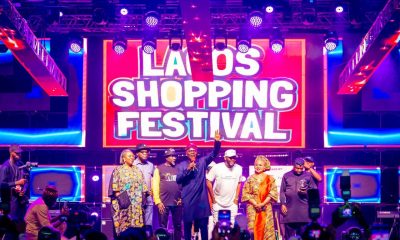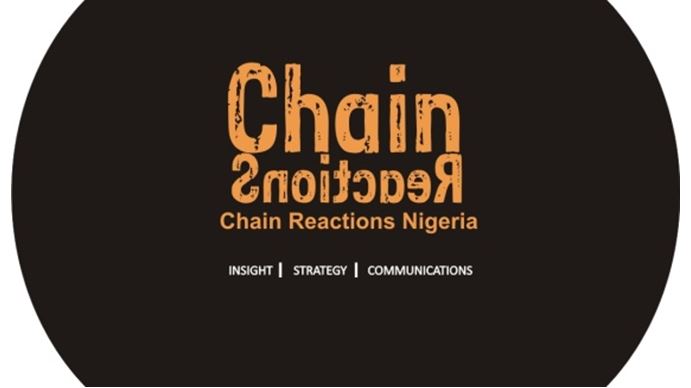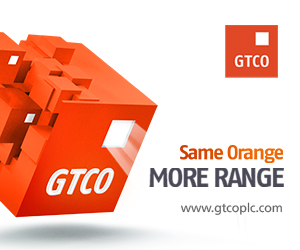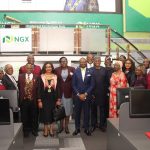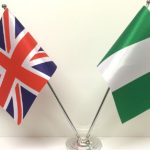Brands/Products
Chain Reactions Unveils New Identity, Innovative Digital Platforms
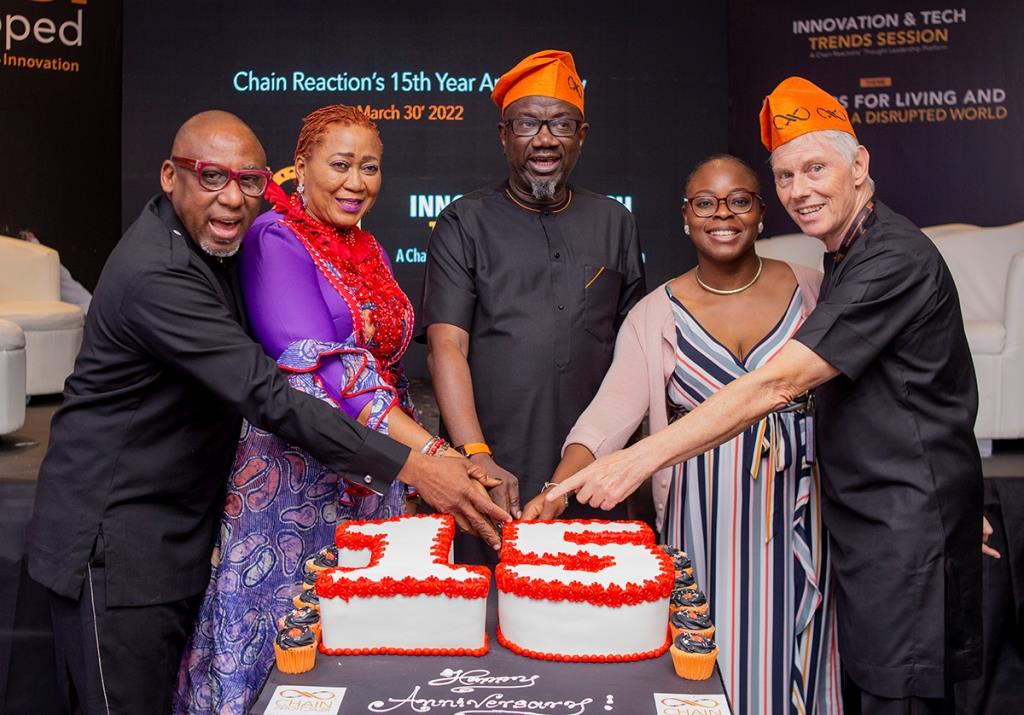
By Dipo Olowookere
Change, they say, is constant and any brand that fails to adapt to the latest trends will be left behind and live to regrets not taking an action.
This may have triggered the decision of a leading Public Relations and Integrated Communications Consulting (IMC) firm, Chain Reactions Nigeria, to “transition from services to platforms,” according to its Managing Director/Chief Strategist, Mr Israel Jaiye Opayemi.
At an event to mark its 15th anniversary held at Radisson Blu Hotel, Ikeja GRA, Lagos, on Wednesday, March 30, the company rebranded and repositioned to become a digital-first platform and 24/7 solution house for governments and brands desirous of winning in Africa’s reputation economy.
It was disclosed that the repositioning involves a name change from Chain Reactions Nigeria to Chain Reactions Africa, setting a new vision and a mission, unifying its expertise and competencies and using them as a competitive advantage to help businesses and governments to understand the extant and emerging cultures and trends.
Mr Opayemi, while speaking at the event tagged Ara Unstripped, informed eminent players in corporate Nigeria and the public sector in attendance that, “It is a transition from services to platforms. Today, we are becoming a digital-first Public Relations and Integrated Communications Consultancy. This explains why we are officially becoming a 24/7 solution house for governments and brands who wish to win in the reputation economy of Africa.”
“Our new role is to help public and private sector clients develop communications strategies that feed on the plate of culture and trends. Cultures and trends have the power to transform human behaviour.
“If a public policy would fail, it may fail because of entrenched cultures and trends a government has failed to notice. Cultures and trends largely influence purchase decisions.
“We all often hear this statement, don’t buy it. It is no longer in vogue. That is a death sentence passed on a brand. It was because the brand owners never paid attention to the changing culture and trends in the market.
“Our solutions will now traverse problem identification, cultural solution, and experience design as a company. Be it voter behaviour, driving against traffic, or consumer behaviour, they are all driven by cultures and trends.”
At the event, Chain Reactions Africa unveiled its new logo, the innovative digital platforms called Ara and the Prophet, and the Goodnews Nigeria website described as “a digital news platform dedicated to reporting everything good and positive about Nigeria. It will become a one-stop-shop for leisure and business tourists seeking information about our great nation.”
While Ara, a chatbot, is CRA’s virtual assistant available 24/7, the Prophet is a tech-powered hub that helps businesses and brands understand issues, trends and cultural nuances in hindsight. It provides clarity on current trends with insight and offers foresight without human interaction.
Explaining the new brand logo featuring African drums, colours orange and ochre, intricate designs and the infinity symbol, Chain Reactions Africa’s Creative Director, Briton, Mr Colin Morris, said, “they represent the heartbeat of Nigeria and Africa.
“These colours mirror the optimism of every Nigerian. They also reflect the colours of the Sahara. The Sahara, of course, is not in Nigeria but Africa and is the reason the logo is not just Nigeria but Africa, the big picture. The intricate designs are also an African thing, not just Nigeria.”
“Chain Reactions is no longer just local; it will get bigger. The infinity symbol tells our story; it’s never-ending. It reflects the opportunities of a new blend of communications merging, beyond the traditional, beyond what we have always assumed.
“As a consultancy, the plan is for Chain Reactions to leave a footprint in every part of Africa. Africa is where we will win.
“Our redesigned logo shows that we are both Nigerian and African; we are progressive and resilient. We are drivers of change in our industry and new industries. Like the infinity symbol, we intend to keep evolving.”
The 15th anniversary featured the maiden Innovation and Tech Trends Summit (ITTS). PR & Comms Manager at OMNIBIZ, Elizabeth Adebanjo, Chief Business Officer, Cellulant, Sike Bamisebi, Group Chief Operating Officer, Palton Morgan, Nidal Turjman and film producer and actress Hauwa Alahhbura discussed Enablers for living and winning in a disrupted world at the session moderated by youth analyst, Femi Daniel.
Executive Assistant, New Media and Public Relations to the Lagos State Governor, Mr Segun Fafore; Head, Marketing Communications and Investor Relations, Wema Bank, Funmi Falola; integrated marketing communications professionals, Yomi Badejo-Okusanya; Mrs Nkechi Alli-Balogun; Chido Nwakanma; and Muyiwa Akintunde were among guests at the occasion.
Brands/Products
Netflix to Buy Warner Bros. Discovery in $82.7bn Mega Deal
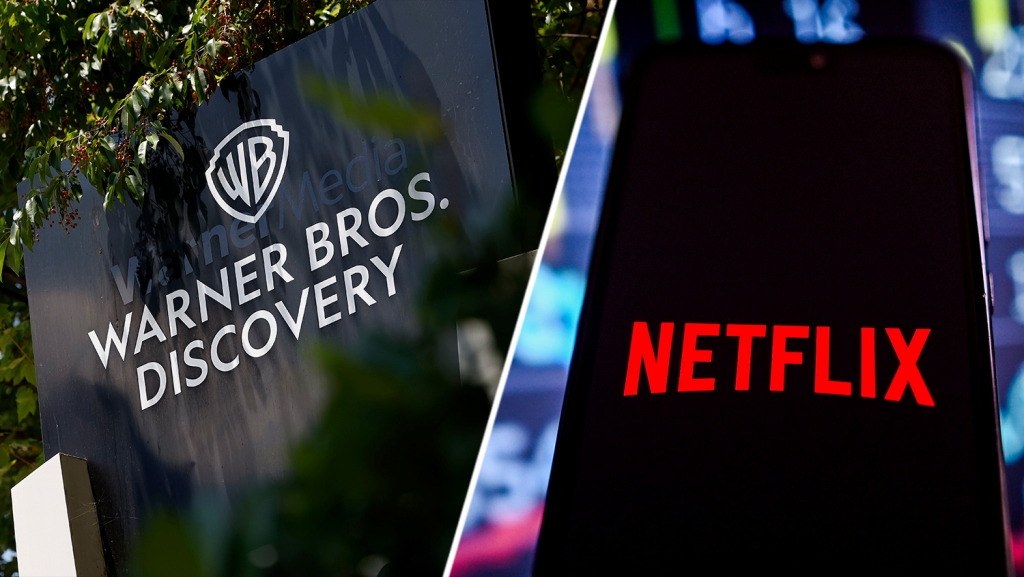
By Adedapo Adesanya
Netflix has reached a deal with Warner Bros. Discovery to buy the legendary TV and movie studio and assets like the HBO Max streaming service for $82.7 billion.
Warner Bros. Discovery is moving forward with its plans to split into two publicly traded halves in 2026. Once the split takes effect, Netflix intends to acquire the Warner Bros. half. The other half, Discovery Global, will house CNN and other cable channels. The Warner Bros. half includes its film and television studios, HBO Max and HBO.
The transaction values Warner Bros. Discovery at $27.75 per share, implying a total equity value of approximately $72.0 billion and an enterprise value of approximately $82.7 billion.
The deal is subject to regulatory conditions, of which there will be several, due to the size of the companies involved and what it means for competitiveness.
For several weeks, Paramount was thought to be the frontrunner in the auction for Warner Bros. Discovery. Paramount executives, who want to buy all of Warner Bros. Discovery – including its cable assets – were confident about their merger proposal and their mutually beneficial relationship with President Donald Trump.
However, Netflix surprised many with the boldness of its bids as it agreed to the same costly breakup fee that Paramount proposed, according to reports. This means the would-be buyer will pay Warner Bros. Discovery billions of dollars if the deal is not completed.
“Our mission has always been to entertain the world,” said Mr Ted Sarandos, co-CEO of Netflix. “By combining Warner Bros.’ incredible library of shows and movies—from timeless classics like Casablanca and Citizen Kane to modern favorites like Harry Potter and Friends—with our culture-defining titles like Stranger Things, KPop Demon Hunters and Squid Game, we’ll be able to do that even better. Together, we can give audiences more of what they love and help define the next century of storytelling.”
Mr Greg Peters, the other co-CEO of Netflix, said the acquisition would “improve our offering and accelerate our business for decades to come,” adding: “Warner Bros. has helped define entertainment for more than a century and continues to do so with phenomenal creative executives and production capabilities. With our global reach and proven business model, we can introduce a broader audience to the worlds they create—giving our members more options, attracting more fans to our best-in-class streaming service, strengthening the entire entertainment industry and creating more value for shareholders.”
“Today’s announcement combines two of the greatest storytelling companies in the world to bring to even more people the entertainment they love to watch the most,” said David Zaslav, President and CEO of Warner Bros. Discovery. “For more than a century, Warner Bros. has thrilled audiences, captured the world’s attention, and shaped our culture. By coming together with Netflix, we will ensure people everywhere will continue to enjoy the world’s most resonant stories for generations to come.”
The terms of the agreement will see each Warner Bros. Discovery shareholder receive $23.25 in cash and $4.50 in shares of Netflix common stock for Warner Bros. Discovery common stock share.
Brands/Products
Video Gaming Firm Xsolla Offers Nigerians Paga Payment Option
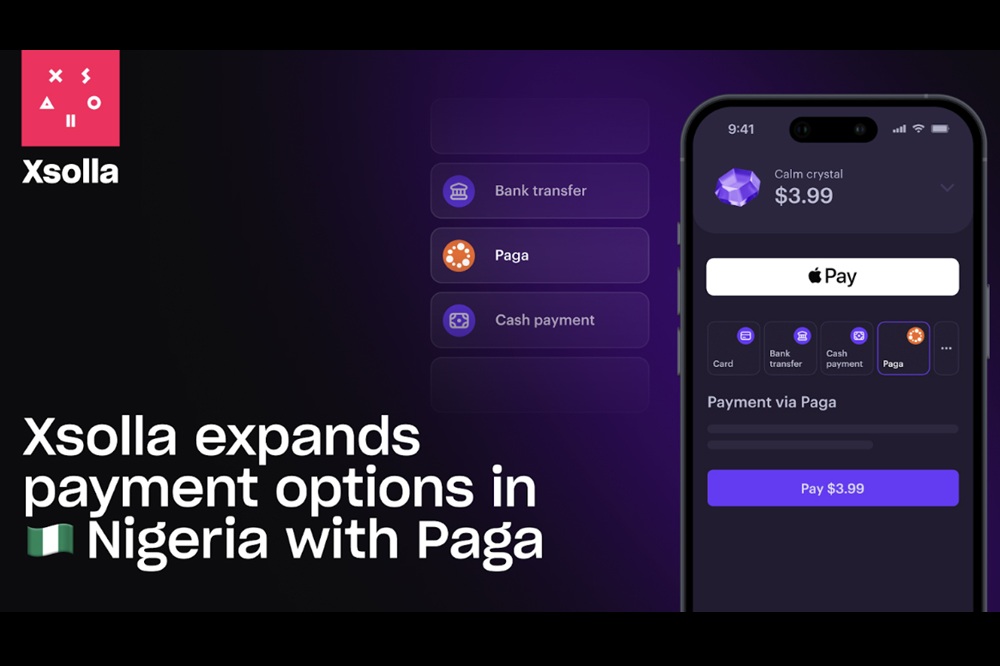
By Aduragbemi Omiyale
A global video game commerce company, Xsolla, has integrated Nigeria’s Paga into its payment system, allowing Nigerians more secure payment options.
Xsolla helps developers launch, grow, and monetize their games and with a large market available in Nigeria, with a population of over 230 million people, working with Paga is a good idea.
With services like Pay with Paga, Bank Transfers with Paga, and Cash by Paga, Xsolla provides a comprehensive payment solution that caters to diverse needs.
Serving more than 20 million users and processing massive volumes nationwide, Paga is one of Nigeria’s largest licensed mobile-money operators.
By integrating Paga’s full suite of payment options, players can enjoy seamless transactions, whether through quick in-app purchases, bank transfers, or cash deposits – with instant confirmations and reduced friction for all types of payments.
“Introducing Paga as a new payment method to players in Nigeria reflects our commitment to meeting players where they are,” said Chris Hewish, President at Xsolla.
“Paga’s strong local presence and trusted platform make it easier for Nigerian players to engage confidently, ensuring that convenience and security go hand in hand.”
From Nigeria to the world, Xsolla provides every payment method developers need to grow and monetize their games globally.
Local payment methods are crucial, enabling developers to reach every player, increase transaction conversions, and drive more sales and revenue. With Paga in Nigeria, it’s easier than ever to pay, play, and succeed.
Key benefits of the Paga integration include instant confirmations, localized experiences, and increased market reach and conversion.
Brands/Products
Temu Partners Dellyman to Scale Logistics Capabilities Across Nigeria

By Modupe Gbadeyanka
As part of its strategies to aggressively scale its logistics capabilities across key African markets, especially in Nigeria, the fast-growing global e-commerce powerhouse, Temu, has entered into a delivery partnership with Lagos-based logistics startup, Dellyman.
Through this collaboration, Temu customers in Nigeria will experience faster, more predictable, and more transparent deliveries, a critical factor in sustaining the platform’s customer satisfaction as order volumes continue to rise.
Dellyman’s technology-driven approach, spanning rider management, route optimisation, and customer visibility, played a central role in Temu’s selection process.
In the pilot phase, Dellyman completed more than 1,300 deliveries with a 95 per cent success rate, demonstrating its readiness to support large-scale e-commerce operations nationwide.
Founded in 2020, the firm has grown into one of Nigeria’s most reliable same-day and last-mile delivery platforms.
The company recently achieved a 10,000-order monthly delivery milestone in November 2025, contributing to a cumulative total of more than 300,000 lifetime deliveries.
This track record made Dellyman a strong fit for Temu, which is aggressively scaling logistics capabilities across key African markets.
“Our partnership with Temu is a major endorsement of the vision we set out with, to build Nigeria’s most reliable, scalable, and transparent last-mile delivery infrastructure.
“Achieving a 95 per cent delivery success rate during the pilot underscores our readiness to support high-volume e-commerce platforms.
“This collaboration shows that local startups can meet and exceed global standards when given the opportunity,” the chief executive of Dellyman, Mr Dare Ojo-Bello, said.
He further noted that the partnership represents more than operational growth as it signals a shift in how global e-commerce brands view Nigerian logistics capabilities.
“This is not just about fulfilling orders; it is about reshaping perceptions of what Nigerian delivery companies can achieve. We are committed to building the kind of infrastructure that supports international standards, empowers local businesses, and ultimately strengthens consumer trust in the broader digital economy,” he noted.
Mr Ojo-Bello added that Dellyman will continue investing in capacity, fleet expansion, and merchant-facing tools to ensure superior delivery experiences for Temu buyers and other online shoppers nationwide.
-

 Feature/OPED6 years ago
Feature/OPED6 years agoDavos was Different this year
-
Travel/Tourism9 years ago
Lagos Seals Western Lodge Hotel In Ikorodu
-

 Showbiz3 years ago
Showbiz3 years agoEstranged Lover Releases Videos of Empress Njamah Bathing
-

 Banking7 years ago
Banking7 years agoSort Codes of GTBank Branches in Nigeria
-

 Economy3 years ago
Economy3 years agoSubsidy Removal: CNG at N130 Per Litre Cheaper Than Petrol—IPMAN
-

 Banking3 years ago
Banking3 years agoFirst Bank Announces Planned Downtime
-

 Banking3 years ago
Banking3 years agoSort Codes of UBA Branches in Nigeria
-

 Sports3 years ago
Sports3 years agoHighest Paid Nigerian Footballer – How Much Do Nigerian Footballers Earn



